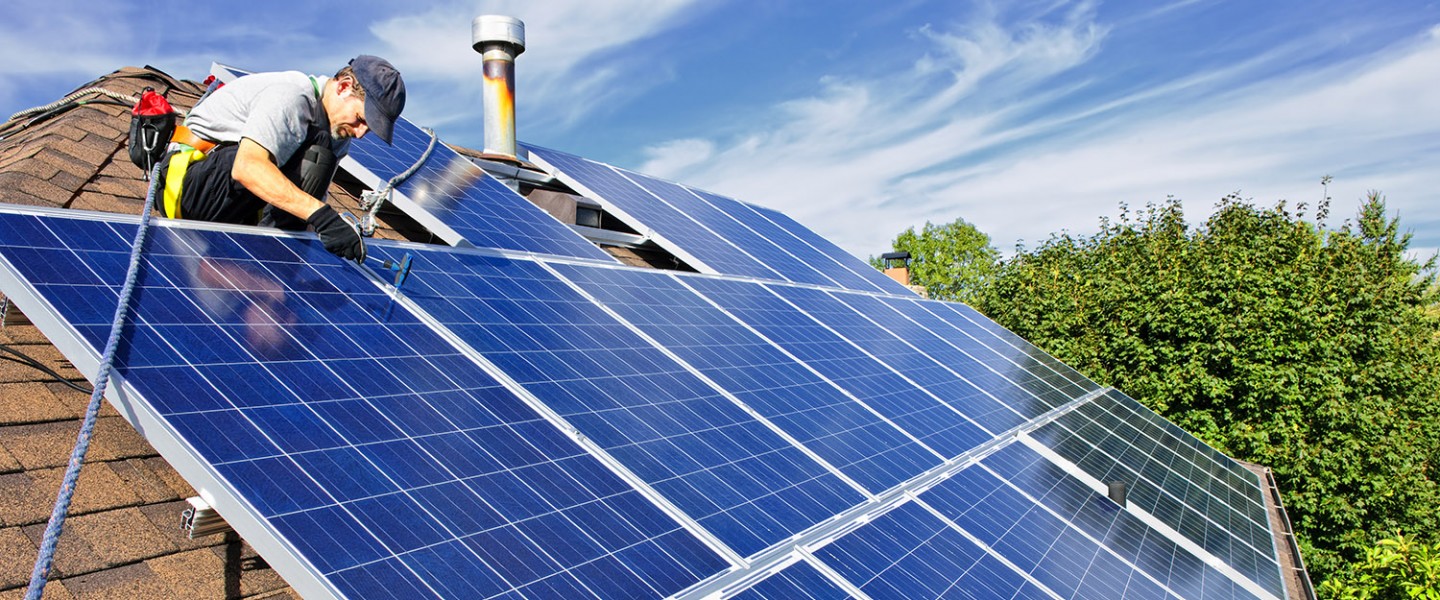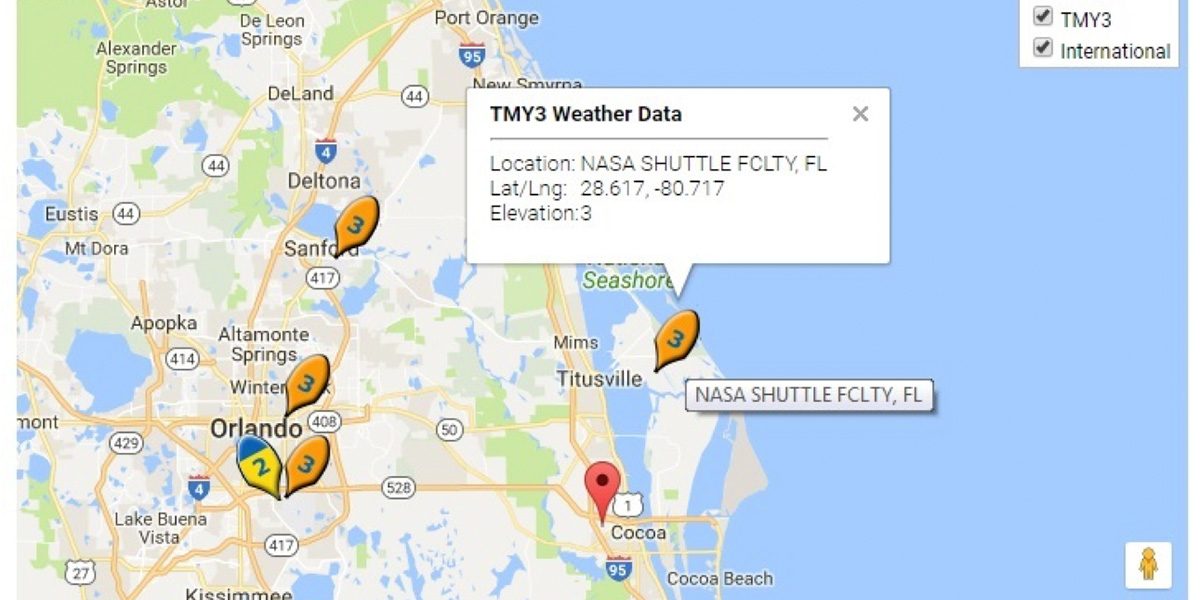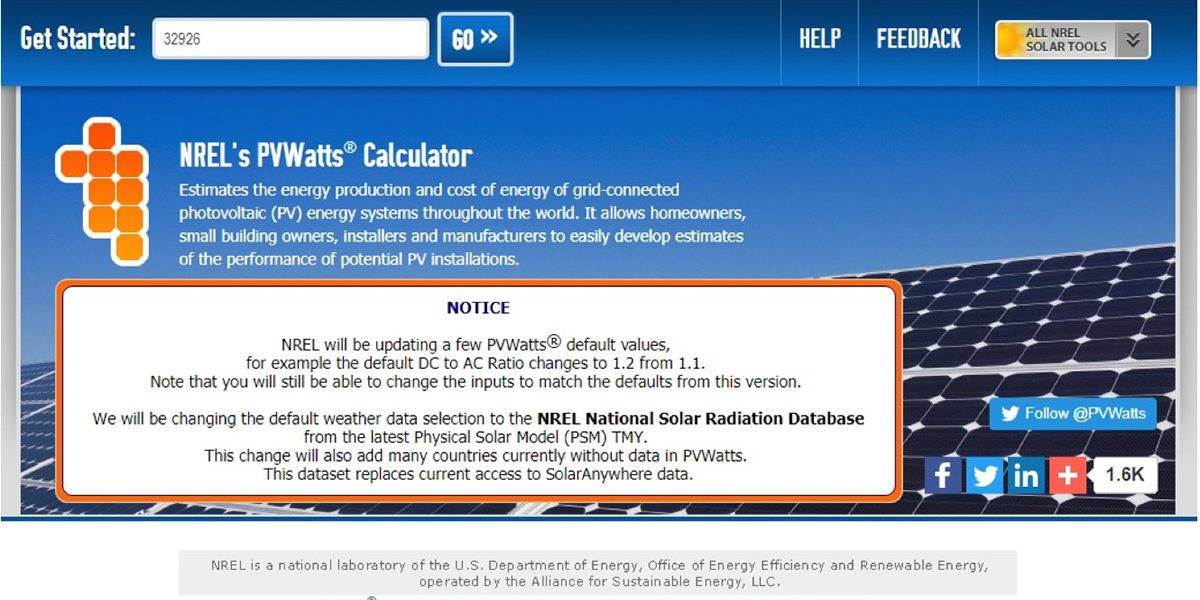 So, the solar bug has finally bitten you and you’re ready to invest in renewable energy and install a photovoltaic (solar electric) solar energy system. Here’s what you need to know:
So, the solar bug has finally bitten you and you’re ready to invest in renewable energy and install a photovoltaic (solar electric) solar energy system. Here’s what you need to know:
- In Florida, at minimum, a homeowner must utilize a licensed electrical contractor to effectuate the wiring of the solar panels, including any interconnection to the customer’s residential electrical wiring. [Florida Statutes, Section 489.103(7)(a)]
- The electric utility serving the building will require an electrical contractor to sign off on the interconnection agreement.
- If hiring a solar contractor, then a electrical contractor is not necessary. A licensed solar contractor can be found at: https://www.flaseia.org/find-a-solar-energy-expert/
- Vocabulary definitions
Steps for Sizing a Photovoltaic (PV) Solar Energy System Prior to Hiring a Solar Contractor
STEP 1: Determine How Much Energy Your Home Consumes in a Year
Determine how much energy your home consumes for an entire year. Gather this information from your utility bills for the last 12 months. Most utility companies provide online access to this information. You are looking for the average monthly consumption in kilowatt-hours (kWh).
For example, the billing history below shows that this site used 1519 kilowatt-hours per month, on average, for this 12-month cycle of billing. Now for the year, that equals:
12 (months) x 1519 (per month) = 18,228 kWh energy for the year. You will use this number shortly.

STEP 2: Determine the Best Location to Install a PV System
There are three things to consider when determining a location:
- Azimuth
Azimuth refers to what direction the array is facing (ex: south, southeast, west, etc.) South-facing arrays are best in the northern hemisphere. East-facing or west-facing arrays are fine as well, but do produce a little less energy than a similar south-facing array. Generally speaking, north-facing arrays should be avoided. For this purpose, North will be 0°, East 90°, South 180°, West 270°. For example, southeast would be 135°(half-way between east and south.) - Tilt
Tilt refers to the pitch of the roof for roof-mounted systems. For ground-mounted systems, assume location latitude for tilt (for Cocoa, FL, latitude is 28.5°. Assume the same value of 28.5° for tilt.) Here is a table of tilt corresponding to roof pitch:Roof Pitch (rise/run) Tilt Angle (deg) 4/12 18.4 5/12 22.6 6/12 26.6 7/12 30.3 8/12 33.7 9/12 36.9 10/12 39.8 11/12 42.5 12/12 45.0 - Solar access (or lack of shading)
The primary killer of PV system production is shading. It is far more important to have an unshaded array than to have one that is perfectly oriented to due south. There are some technologies that help mitigate partial array shading, but for this example, the array location should not be shaded between 9am and 3pm on the winter solstice. Consider the future growth of vegetation when conducting your site survey. A good solar contractor will perform a shading analysis to ensure maximum array production before installing the system, but for this exercise, try your best to be realistic about current and future shading conditions. Hint: use Google Earth to look at the bird’s eye view of your house! You can look at potential causes of shading and also determine azimuth this way.
STEP 3: Use NREL’s PVWatts® Online Calculator
The National Renewable Energy Laboratory’s (NREL) PVWatts® Calculator estimates the energy production and cost of energy of grid-connected photovoltaic (PV) energy systems throughout the world. It allows homeowners, small building owners, installers and manufacturers to easily develop estimates of the performance of potential PV installations. The PVWatts’ output is fairly realistic in regards to actual system output, provided accurate inputs are entered into the software.
A. Enter the Zip Code for you location.
B. Select the weather station closest to your location

C. Input the relevant site information into PVWatts®

—“DC System Size”: We need to calculate what 1kW of DC input produces for a specific site. Don’t worry about your actual system size yet, we will calculate that later.
—“Module Type”: Leave it as “Standard”. If you end up buying a more premium module type, it will improve the energy numbers a little, but “Standard” is good for the calculations here.
—“Array Type”: Choose “Fixed (roof mount)” unless it is a ground mounted system. If it is a ground mounted system, choose “Fixed (open rack)”
—“System Losses (%)”: Leave the value at 14.
—For “Tilt (deg)”: Input the roof slope where the array will be mounted, or latitude for your location if it is a ground mount system.
—“Azimuth (deg)”: Input which direction the array will face. Again: North 0°, East 90°, South 180°, West 270° and arrays facing in between cardinal directions should be calculated as closely as possible (southeast 135°, southwest 225°.)
—“System Type”: Choose “Residential”
—“Average Cost of Electricity Purchased from Utility”: A common value in Florida is about $0.12. That is 12 cents per kilowatt-hour. This is not critical for system sizing.
D. Examine Results

STEP 4: Calculate Desired PV System Size
Based on utility billing (STEP 1) and the PVWATTS output (STEP 2), in the example above, the consumed energy for the year was 18,228 kWh AC.
In order to offset this much energy use, you need to know what size your PV array (DC input) needs to be to produce this much AC energy output. Simply divide the yearly consumption in AC energy (Step 1 above) by how much AC energy is produced by 1kW DC (your answer from PVWatts Step 2-D above) and you know what size array you will need.
So for this example, 18,228 ÷ 1,432 = 12.7 kW DC input.
This means that to offset the entire energy bill for this residence, you would need to install a 12.7kW DC rated system.
Reducing the Need for a Large Photovoltaic System
The residence used in the example above was not a good example of being energy efficient. Many homes in Florida do not actually consume 18,228 kWh AC per year. Then again, plenty of them do. This particular residence had an old air conditioner that was quite inefficient and also needed improved insulation in the attic and a new roof. The homeowner replaced the air conditioner with a high efficiency model and replaced the shingle roofing with a reflective metal roof. These steps significantly cut down the energy consumed by the home.
What if you already have an energy-efficient house and still use a lot of energy? The simple answer is that installing a PV system may not entirely eliminate your electricity bill. But what if it cut it by 75%?
Let’s look at the numbers again from the above example. In order to offset 100% of the energy consumption, it was calculated that a 12.7 kW DC system would need to be installed. Let’s assume you want to cut your bill by 75%. Multiply that 12.7kW DC by 75% (or 0.75).
12.7 kW DC x 0.75 = 9.53 kW DC
A 9.53 kW DC system would be needed to offset 75% of the utility bill.
What is the Cost of a Photovoltaic System?
According to NREL’s published report, U.S. Solar Photovoltaic System and Energy Storage Cost Benchmarks: Q1 2021, the average cost of installing a solar electric system is $2.65 per DC watt. A 9.53kW DC system would cost about approximately $25,000.
A good rule-of-thumb is to get multiple quotes from licensed contractors, just as you would if you were going to install a new air conditioning system. Floridians can check Florida Department of Business and Professional Regulation for current licenses.
What’s the Payback of a Photovoltaic System?
Let’s just do simple math and not even bother with interest or rising utility rates. First, let’s look at how much a utility bill costs by doing nothing.
18,228 kWh x $0.12 (per kWh) = $2187. $2187 yearly / 12 months = $182 per month on average. This does not include monthly connection fees, high usage rates, and other costs.
Now, let’s look at offsetting that by 75%. $2187 x 0.75 = $1640. That is $1640 per year that is staying in your pocket. The monthly bill goes from an average of $182 per month to (2187-1640) / 12 months = $46 per month. So, we went from $182 owed per month to $46 owed per month on average. Again, here is the math for that:
Scenario 1: doing nothing.
18,228 kWh per year x $0.12 per kWh = $2187 per year OWED to utility
$2187 per year / 12 months per year = $182 per month OWED to utility
Scenario 2: offset by 75%.
18,228kWh per year x $0.12 per kWh x 0.75 = $1640 per year SAVED
$2187 – $1640 = $547 OWED to utility per year
$547 per year/ 12 months per year = $46 per month OWED to utility
We are now saving $182 – $46 = $136 per month!
$25,000 (system cost) / $1640 yearly savings = 15.24 years to repay the system costs. For a system that will likely produce energy for well over 30 years, every day after 15.24 years is free money! Again—this does not include interest, investments, or increasing utility rates here, just straight line calculations.
There is one other factor that can help a PV system repay itself even faster. Often, utilities have a tiered billing structure that makes the consumer pay a higher rate for excessive consumption. For example, a homeowner may be charged $0.12 per kWh up to 1000 kWh in a billing cycle, but if the homeowner goes over that 1000kWh threshold, the homeowner is charged a higher rate for every kWh in excess of that 1,000kWh threshold. Looking at the example above, the first 1,000 kWh monthly is billed at $0.12 per kWh, but the extra 519 kWh may be billed at $0.16 or even more per kWh. So, if the PV system at least gets that consumption below 1,000 kWh per billing cycle, there is added savings there.
Summary
In summary, solar electric (PV) systems are long-lived and almost always are a very good investment. Often, improving the overall efficiency of a residence will have a significant impact on energy usage. If the efficiency is improved and you want to minimize your utility bill, a properly sized and properly installed PV system will do exactly what it is supposed to do.
[Last updated: 11/15/2022]
